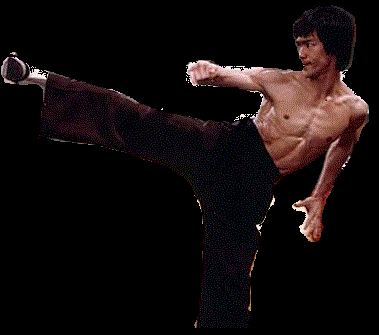Vovinam Việt Võ Đạo
Vovinam is practiced with and without weapons. It is based on the principle of between hard and soft. It includes training of the body as well as the mind. It uses force and reaction of the opponent. Vovinam also includes hand, elbow, kicks, escape- and levering techniques. Both attack and defense techniques are trained, as well as forms, combat and traditional wrestling. The wide range of techniques include punching, kicking etc. as well as forms, wrestling, sword, staff, axe, folding fan and others.
Self-defense techniques cover defense against weaponless attacks like choking from behind and defense against attacks with knife or sword. Advanced students learn to combine the techniques and learn to defend themselves against armed opponents. Instructors train traditional weapons like the long stick, short stick, knife, sword and sabre. Thereby the weapons serve as training devices for reaching optimal control of body and mind.
History:
Vovinam Việt Võ Đạo was founded as Vovinam by Nguyễn Lộc (1912 – 1960) in 1938, with the intent of providing practitioners with an efficient method of self-defense after a short period of study. Nguyễn believed martial arts would contribute to freeing Vietnam, which had been ruled by France since 1859, from outside domination. Vovinam, which Nguyễn synthesized from his knowledge of traditional Vietnamese martial arts and elements of Chinese, Japanese and Korean systems, was thus created partially as a response to the French occupation, meant to promote a sense of national identity for the Vietnamese people. After being invited to demonstrate Vovinam publicly in Hanoi with his disciples in 1940, Nguyễn was invited to teach the art at Hanoi's Ecole Normale, and Vovinam gained in popularity. During the following years, political unrest increased throughout Vietnam; due to the system's nationalist political orientation, the art came under suppression. By 1954, Nguyễn had emigrated to South Vietnam, where he was able to continue to teach and establish Vovinam schools. After his death in 1960, Grandmaster Le Sang continued the development and international promotion of Vovinam until his own death on September 27, 2010. The first Vovinam school outside of Vietnam was established in Houston, Texas by Vietnamese emigrants in 1976, after the Fall of Saigon. By 2000, Vovinam schools had been established in Australia, Belgium, Canada, France, Germany, Italy, Morocco, Poland, Spain, Switzerland, and the United States. Vovinam now exists as Vovinam Việt Võ Đạo, without the political overtones it previously carried.
Theory:
Hard and soft
The Yin & Yang-Theory (Vietnamese: "Âm-Dương") states that everything in the universe and on earth is initiated through the interrelation of Yin (negative) and Yang (positive). As to this theory there are martial arts that prefer the hard over the soft and others that prefer the soft over the hard. Vovinam Việt Võ Đạo does not prefer any over the other. Hard and Soft are used equally to adapt to every situation, to every problem.
Based on Võ-Thuật the student aims to develop the ability to combine hard and soft at the right relation, in combat and in daily life. This aiming to develop both physical abilities as well as the student's spirit. Not only the principle of the harmony of hard and soft but also many other things resulting from the training contribute to internalizing the martial art philosophy, e.g. fighting spirit, courage, tenacity, fairness, modesty and tolerance. Above all the training morality and the way of applying the techniques shape the students' character.
The greatest difficulty is to see through one's own ego and then to overcome it.
On success in doing so the Vovinam student will gain generosity and tolerance with other people.
With the awareness that the most important thing in life of a human are other humans the final goal is to be able to not only help oneself but also to help others to live in peace and harmony with ones surrounding.
With the salutation, "Iron Hand over benevolent heart" the student is reminded about the main principle and about the goal of Vovinam Việt Võ Đạo with every training. It is also about using the opponent's force and reaction, hence reach maximum effect with little force/effort.
10 principles of Vovinam Viêt Võ Dao:
The term Việt Võ Đạo ("the way (Dao) of Viet Vo") was coined by the patriarch of 2nd generation of the Vovinam Viet Vo Dao, the Grand Master Le Sang with the objective to add a philosophical dimension to his martial art. This "Viet Vo Dao" consists of ten principles:
1.Vovinam's disciples vow to pursue high proficiency in their martial art in order to serve the people and humanity.
2.Promise to be faithful to the intentions and teaching of Vovinam and develop the young generation of Vovinam Viêt Võ Dao
3.Be united in spirit and heart, respect one's elder, be kind to one's peers.
4.Respect discipline absolutely, maintain the high standard of personal conduct and honour of a martial art disciple.
5.Have respect for other martial art schools, only use martial art skills for self-defense and protect justice.
6.Be studious, strengthen the mind, enrich one's thought & behavior.
7.Live simply, with chastity, loyalty, high principles and ethics.
8.Build up a spirit of steely determination and vigor, overcome powers of violence.
9.Make intelligent judgments, carry out struggles with perseverance and act with alertness.
10.Be self-confident, self-controlled, modest and generous.





